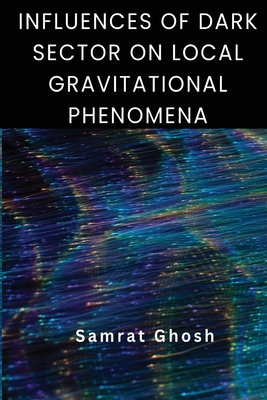You are here
Back to topInfluences of Dark Sector on Local Gravitational Phenomena (Paperback)
Description
General Relativity (GR) is arguably considered as the most elegant theory in
physics. GR pronounces gravitation as the manifestation of space-time geometry.
GR has been extremely successful at describing observations and passed all
experimental tests conducted so far. GR based cosmology is the cornerstone of
the current hot Big Bang description of our Universe. However, some unexpected
components turn out to make up most of the Universe's mass-energy budget in
the GR description of the observations at large scales.
Recent cosmological observations suggest that the Universe is undergoing a phase
of accelerated expansion. The explanation of such accelerated expansion in the
purview of general relativity requires the presence of a large amount of some
exotic form of energy density with negative pressure, the so-called dark energy.
On the other hand, the amount of luminous matter in galaxies is found insufficient
to explain the observed galactic rotation curves and thereby the existence of
non-luminous or dark matter, that neither interacts with radiation nor with the
conventional matter except through the gravitational field or through some feeble
interaction, has to be assumed. This dark matter component is also required to
be non-relativistic (i.e. cold) in view of structure formation. It appears from a
wide variety of astrophysical observations that ordinary baryonic matter constitutes
just 4.9% of the energy density in the Universe while dark matter composes
about 26.8% and the dark energy contributes most - about 68.3% of the energy
density in the Universe.
The journey of exploring the laws of nature had crossed a milestone when Nicolus
Copernicus predicted the actual planetary motion and his student Galileo Galilei
proved his teacher's prediction by his revolutionary discovery of Telescope. The
laws of planetary motion by Johannes Kepler, created a perception about motion
inside the solar system which was given a proper and generalized dimension by
Isac Newton with his revolutionary Theory of Gravitation 2]. The invention of the
telescope and the theory of Gravitation explored the gateway of gathering knowledge
about the phenomena not only beyond the Earth but beyond the solar system
also.
